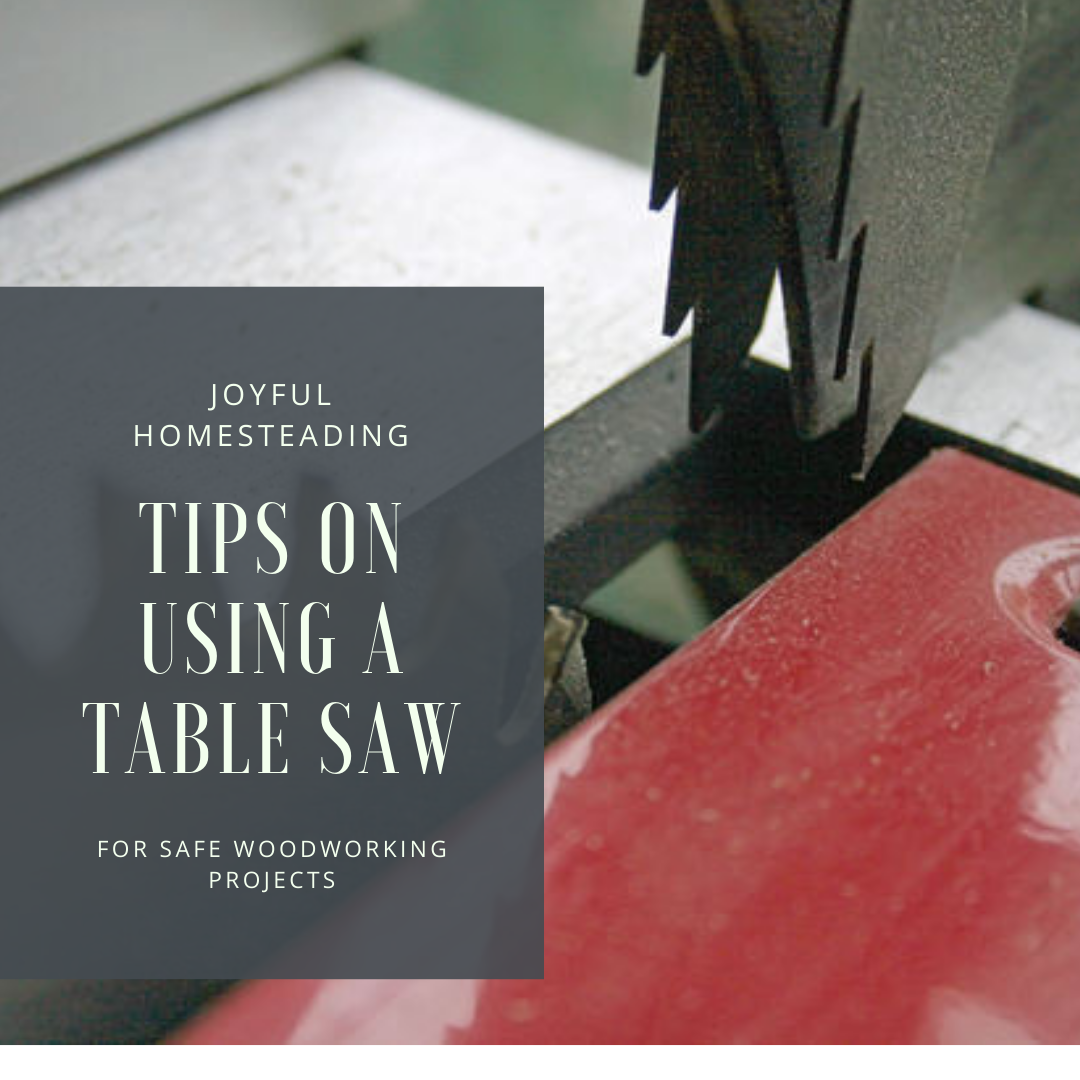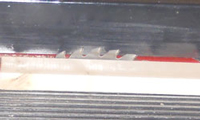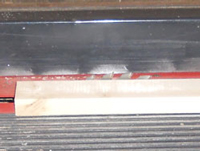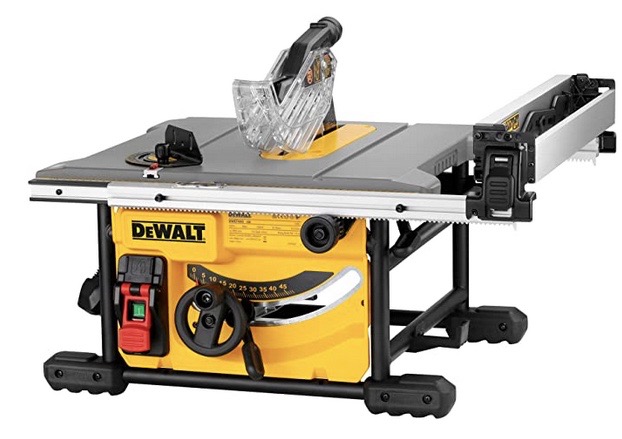Safe Table Saw Use
Safe table saw use is not only possible, but occurs on a routine basis on homesteads and in workshops across the country. Even if you haven't been inside a high school in decades, it is possible to learn how to use table saws safely, and you'll soon find it one of the most indispensable tools you own.
But if you were never fortunate enough to take a woodworking course in high school, you may find the idea of using one a bit intimidating. The good news is you can learn how to use a table saw and other power tools to make goat shelters, goat feeders, beehives and virtually anything else you can think of that involves wood.

Isn't it Dangerous?
Any tool can be dangerous if you don't know how to use it, or if you use it carelessly. Think about the kitchen knife. If you handle it carelessly, you could hurt yourself pretty seriously, right? But, if you know what you're doing, there's no reason to be afraid of one. It's the same with a table saw. Learn safe table saw techniques, and you'll be just fine.
If you have never seen a table saw in use, it's a good idea to have someone show you how to use one the first time. Ask around. You're bound to find a carpenter or woodworker who can show you the ropes of safe table saw use. Also take the time to read the safety manual that comes with your table saw. Know where your safety shut-off is, in case of the wood binding up. You want to be able to shut the saw off without taking your hand off the wood.
A small table saw like this one is easy to use and store.
Kickbacks
A board can kick back if the blade is not the right height. You want to use the full, cutting part of the tooth on the wood.

Here is the blade is too high.
A good rule of thumb for safe table saw use is to have the top of the blade about three-eighths of an inch above the top of the wood. Some people prefer the blade to be higher, but it will depend on the type of wood you are cutting.

Here the blade is just right.
You also want a good, sharp blade. On a table saw you are almost always going to do a rip cut - in other words cutting with the grain - rather than a crosscut. Make sure you have the right blade, depending on the type of wood you are cutting.
For example, if you are cutting plywood, then you would need a fine-tooth, or 80-tooth, or plywood blade. You want a ripping blade or a combination ripping blade depending on the wood you are using.
Also always use a push stick to push the wood through and make sure the wood is pushed all the way past the blade before letting go of the wood. And always wear protective eye wear.
Hold on Tight
This is one of the most important aspects of safe table saw use, so I'm going to emphasize this once again; never, never let go of the piece you're working on. If you happen to let go, the piece will fly back and hit you head on, and you won't have time to get out of the way. Always hold onto to the piece until the cut is complete.
Return from Safe Table Saw Use to the Home Page






New! Comments
Have your say about what you just read! Leave me a comment in the box below.